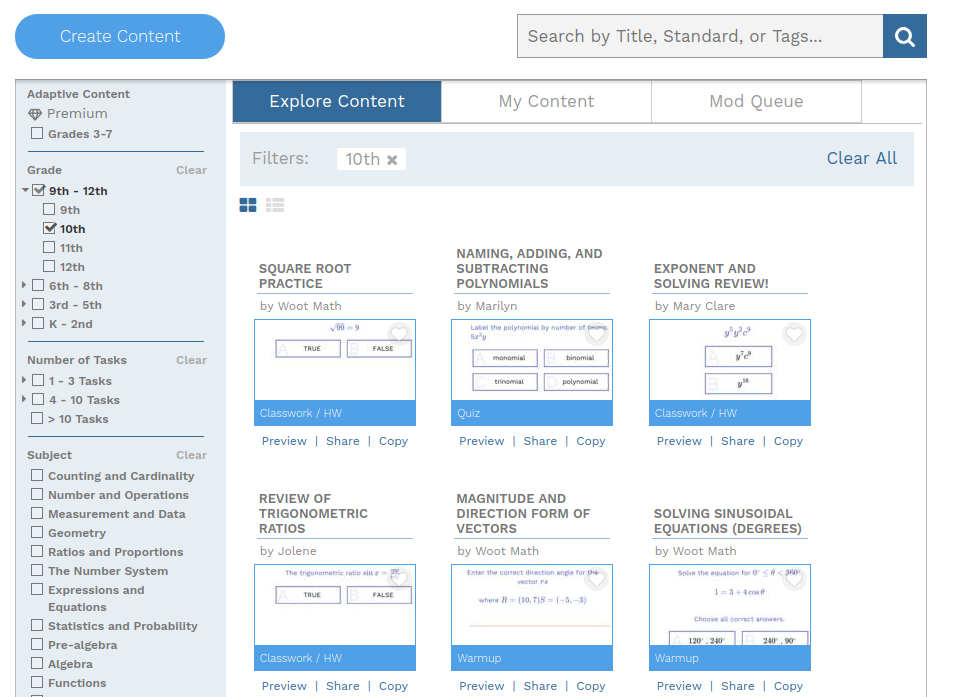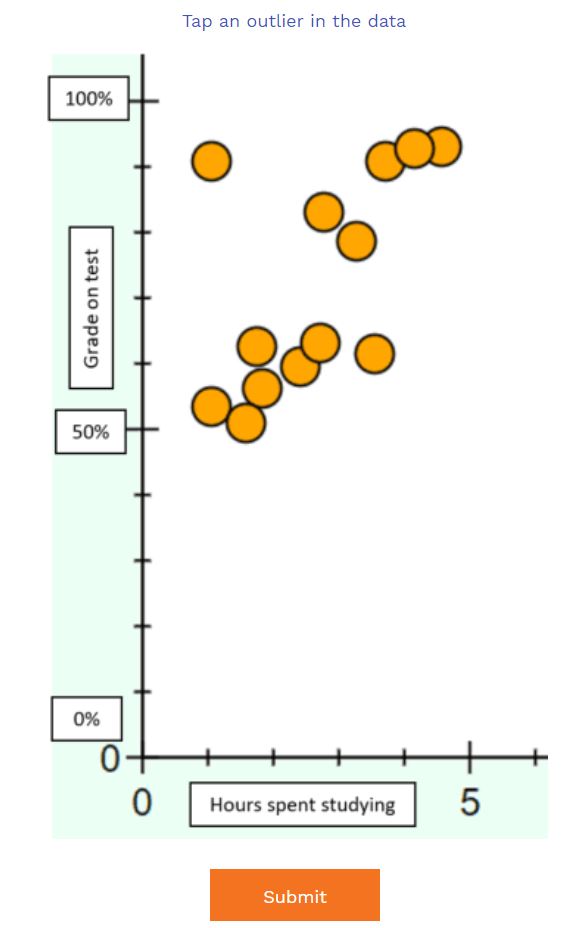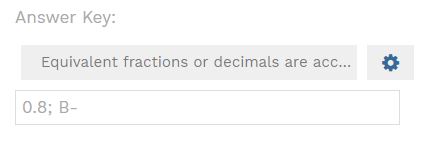Woot Math has content for K-12, so regardless of what you are looking for, you’ve come to the right place! To get started, you can first select your grade using the left-hand navigation or search.

You can further filter search results by selecting a specific number of tasks and subject, as shown:

To view the Adaptive Learning content, select the Grades 3-7 option as shown:

Any of this content can be added to My Content, which will allow you to edit, assign, preview, and more. Learn more about how to assign content to your students here.






